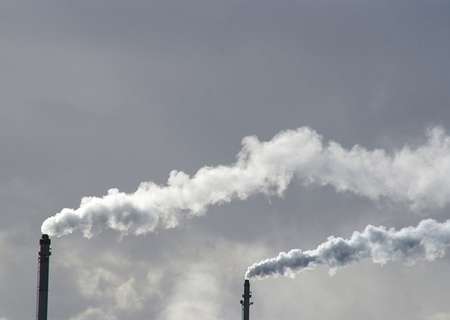Greater granularity on anthropogenic emission

Improved estimates of anthropogenic emissions contribute to better overall air quality forecasts, thus allowing people to manage health conditions associated with air cleanliness.
Anthropogenic emissions have, until now, been collected, but not harmonised. These consist, for example, of data of nitrogen oxides (NOx) emissions, smog, methane, CO2 and even pollen and dust produced, among others by heavy industry and power plants. Now, thanks to an EU funded project called MACC ll, the availability of data is greatly improved. "Before MACC, there were no emission inventories at the European scale," explains Hugo Denier van der Gon, who is responsible for the European anthropogenic emission data in the project. These newly improved capabilities could contribute to improve air quality forecast. Ultimately they could help predict, for example, whether asthma patients should increase their medication. They could also help define whether people should postpone their exercise on account of air pollution.
The particularity of the project's research approach is that it deals with pollutants caused by human actions. And it also records where the pollutants have been emitted. "This focus on the exact origin of those anthropogenic pollutants is important," says van der Gon. "Because if you want to do something about [air pollutants], you need to know exactly what they are, but also where they come from."
Until now, European emission levels were difficult to compare. "European countries were already required to report their emissions to the European Commission or to the European monitoring programme," van der Gon, who is also a senior researcher in built environment and geosciences at TNO in Utrecht, the Netherlands, tells youris.com. He notes thatevery country did that in a slightly different manner.
As a result, there was no consistency between anthropogenic emissions datasets. The project has therefore been focusing on harmonising all of the available data. High resolution of seven by seven kilometres and consistent time series have only been available now, according to van der Gon. Such resolution improvement has made it possible to analyse the progress made by European environmental legislation in relation to lowering air pollution.
In addition, the project scientists are experts in making emission inventories and have therefore been able to do some gap-filling. This means that if there are missing sources, or if countries do not report everything, the gap can be filled, making it a complete dataset.
The improved estimates have a clear practical use. "Our models can be the basis for a lot of governments for developing [air quality] policies," Claire Granier explains. Granier is director of research at the LATMOS Institute in Paris, France, and the deputy coordinator of the MACC-II project. For example it would help define what 'business as usual' means not only for climate, but also for air pollution. This can really make a difference for people in general. It may turn out to be wise to ban all diesel powered traffic from cities in future, or to focus more on hydropower when producing electricity.
While van der Gon's work on improving emission estimates deals mostly with Europe, his colleague Granier works on the global scale. This is a completely different matter. At global scale, it is pointless to try and achieve the level of resolution of seven by seven kilometres found in Europe. But it is much more relevant to try and harmonise the different methodologies for measuring the same types of pollutants. This is particularly helpful if, for instance, the United States and China measure particle emissions in completely different manners not allowing data to be compared.
Discover the latest in science, tech, and space with over 100,000 subscribers who rely on Phys.org for daily insights. Sign up for our free newsletter and get updates on breakthroughs, innovations, and research that matter—daily or weekly.
One expert welcomes such an approach to estimating anthropogenic emissions. "MACC ll is in my view the most reliable tool we have now to our disposal when it comes to a type of weather forecast regarding air quality," says Ondrej Vlcek, head of the department of atmospheric modelling at the Czech Hydrometeorological Institute, CHMI, in Prague, "It also offers several different forecasting models, so you are also able to predict the uncertainty of a specific forecast."
Another expert agrees but would like to see more precision: "One of the limitations of this project at this moment is the spatial resolution of the forecast," says José Baldasano, professor of environmental engineering and head of the science department at the Barcelona Super Computing Centre in Spain. "It's good for an overview of Europe, and also globally, and it's good for the background concentration in a lot of rural areas, but the spatial resolution is not good enough for urban areas." However, the project's remit is to provide forecasts on a global and European scale, not on the local or urban scales. The latter are left to the individual countries, which can benefit from the project's information on boundary conditions for given geographical domains.
Project scientists appreciate that there is still work to be done. Granier explains that once the project is finished in July 2014, the gathering of data and the search for more precision will go on under the flag of the Copernicus-atmosphere project. Meanwhile the present day results are already a significant improvement. Van der Gon: "I'm staying on the safe side, but I can confidently say that air quality forecasts are now twice as good as before."
Provided by Youris.com

















